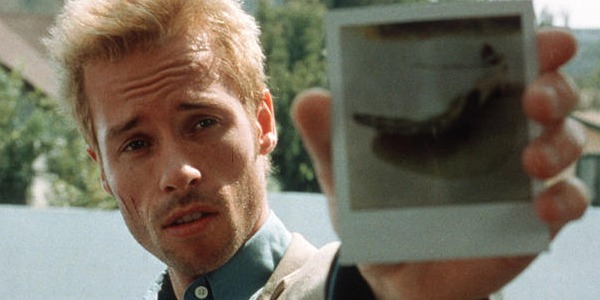The Beginner’s Guide: Neo-Noir

Liam is a freelance culture writer based in London.
The dark and dangerous world of neo-noir has dazzled audiences for decades. Down the years these dark thrillers have become cinematic staples. With their sinister themes and seedy characters, neo-noir films twist around your mind, forcing you to look at your own deepest nature.
It can prove quite tricky to nail down what exactly constitutes “neo-noir” since it could be applied to virtually any crime thriller. Some argue neo-noir is more of a style or mood than and others believe it’s merely an exercise in nostalgia. While the exact definition is up for the debate, the key thing to note is that neo-noir films are separate from the major releases in the classic film noir era. Most film scholars cite neo-noir as emerging after the 1950s, which is when the original noir fizzled out.
This article is available as an Audio Article to our patrons!
 Don’t feel like reading and would prefer to listen, instead? Sign in or become a patron today!
Don’t feel like reading and would prefer to listen, instead? Sign in or become a patron today!
Neo-noir is cool, edgy and mysterious and you need to know about it. Here are the key characteristics to look out for.
Cynical, deeply flawed protagonist
You would be hard-pushed to find a protagonist in a neo-noir film who doesn’t possess a crippling flaw. Like film noir, most of the characters are anti-heroes with a shady past. They’re usually trapped in a nightmare and their motivations are always primal. These characters are almost always searching for something. Whether they’re solving mysteries or plotting revenge, the protagonists of neo-noir are brooding figures (usually men), struggling to survive – and they rarely have happy endings.
The interplay of light and dark
Forget about the wise-cracking criminals for a moment. At its heart, neo-noir is about light and darkness, and how the line between the two can become blurred. Many directors use dark visuals to emphasise characters or certain details in scenes. The interplay of light and dark is one of the most prominent elements of neo-noir.
Femme Fatale
Oh, the femme fatale. It’s a trope that’s never really died. These powerful, mysterious ladies have always been central to film noir, and are often portrayed as leading men to their downfall. Today, the modern femme fatale is far more sympathetic and empowered. In neo-noir films, these women are sometimes the main character and often have fluid identities.
Let’s look at some of the greatest neo-noir films to date.
Chinatown (1974)

If you’re struggling to know where to start with neo-noir, look no further than Chinatown. It is a timeless, neo-noir masterpiece and one of the greatest movies of 70s Hollywood cinema. Starring Jack Nicholson as private eye J.J. “Jake” Gittes, Chinatown is elegantly paced and full of rich period detail. It plays out like a classic noir from 1930s LA, albeit with colour.
From the setting to Jack Nicholsen’s slick and world-weary anti-hero, the film embraces its genre conventions. Evelyn Mulwray is the femme fetale. She’s a woman with a mysterious past and weaves a web of lies that builds throughout the film. Chinatown‘s villains are shadowy oligarchs who carry out schemes in broad daylight. Sunny LA proves to be a place seething with corruption, much like the dark underworlds of film noir. Over forty years on, Chinatown is still super stylish and utterly distinctive.
Blade Runner (1982)

Blade Runner is a mix of two distinct genres, neo-noir and science fiction. The film displays a stunning visual style. It features striking shots of a crowded, decaying metropolis hit by constant rainfall. Issues of identity and morality are explored at every turn as Harrison Ford’s Rick Deckard hunts down the bio-engineered beings known as replicants. Blade Runner polarised critics when it was first released, but it garnered a cult following. Today, it’s widely regarded as one of the greatest sci-fi movies
In Blade Runner, the whole of society is in decline and the tone of the film is largely cynical. Ridley Scott’s film deals with issues that were not prevalent in the film noir of the 1940s and 1950s, such as technology and globalisation. For the most part, Blade Runner subverts noir conventions for a modern audience. The film shows us a futuristic city gone wrong and there are constant obscured scenes for that added sense of mystery. Blade Runner is an iconic example of neo-noir.
Blood Simple (1984)

Made with a shoe-string budget, Blood Simple is the debut of Joel and Ethan Coen. The film announced the Coen Brothers as a force to be reckoned with in cinema. Blood Simple is the tale of a young woman’s struggle to escape the hands of a private eye who has been hired to kill her. It has all the special traits of neo-noir, such as deep shadows and night settings.
The Coen Brothers took inspirations from the work of Ryan Chandler and Dashiell Hammett for Blood Simple. Much of the interest in Blood Simple lies in its visual style. Following in the footsteps of film noir filmmakers, the Coen Brothers used minimal lighting in each scene to create a “hard-edged” look. The rural Texas setting of Blood Simple breaks the typical conventions of neo-noir, but this new environment allows for different types of characters. Blood Simple is a shining example of an independent film that use its freedom to experiment with style and explore new avenues of neo-noir.
Fargo (1996)

Fargo is the Coen Brothers’ most acclaimed film and it does an excellent job of subverting genre tropes. While most neo-noir films are set in sprawling cities, the story of Fargo takes place in a Midwestern town. Like Blood Simple, the criminals in Fargo appear cold and ruthless, but their acts quickly spiral out of control, in a comical fashion.
Chief Marge Gunderson is at the centre of the tale and she’s nothing like the detective protagonists you’d normally find in noir stories. Marge is quirky, headstrong and unflappable in a crisis. The noir elements in Fargo are arguably subordinate to the wider themes of family, greed and moral dilemmas. Fargo is a great combination of black comedy and neo-noir.
Memento (2000)

Christopher Nolan’s Memento is shot in a disorientating fashion. It places the viewer into the mind of Leonard, who suffers from short-term memory loss and is searching for his wife’s killer. Memento brings out neo-noir moods and styles with its dark scenes, flashbacks and detective storyline.
Memento harks back to the classics in film noir, in which the central protagonist is flawed with a dark past, and there’s voice-over narration. The story is told in reverse, giving the film a surreal nature. The structure makes Memento is a deeply complex and unique neo-noir. It’s a story of moral ambiguity, featuring a deceptive femme fatale, Natalie, who plays an important role in Leonard’s investigation.
Mulholland Drive (2001)

Mulholland Drive is incredible to watch. It’s an enthralling movie and widely recognised as one of the greatest films of the 21st century. The film is an unsettling journey through the subconscious, focusing on actress Betty and a dark-haired woman who has amnesia and is assuming the name of “Rita”. Set in a dream-like Los Angeles, Mulholland Drive is heartrending, with a satisfyingly confusing narrative.
For a large part of its runtime, Mulholland Drive is a detective story, in which Betty tries to help Rita solve the mystery of her true identity. The compulsion to find something that is “lost” is a recurring theme in neo-noir and it’s executed to perfection in Mulholland Drive. Betty is swept into a world of mystery as soon as she meets Rita, a dream-like feme fatale. While Mulholland steers us down the road of perplexity, it’s a fascinating film that’s open to interpretation.
Gone Baby Gone (2007)

Gone Baby Gone is a smart thriller and a haunting tale of abduction and moral dilemmas. Private detective Patrick Kenzie is hired to find a missing a girl from Boston. From corrupt cops to dark secrets, the film has a deep, multi-layered story and it does feel as though it’s been plucked from the past. Gone Baby Gone has a decidedly hard-boiled narrative and different depictions of the truth.
The overall story is gripping, tense and there’s a wealth of interesting characters. Patrick is a confident detective who shows resilience in his efforts to solve the case, with the help of his partner, Angie Gennaro. The film keeps viewers guessing as the two private investigators search for the missing girl in Boston’s criminal underground.
Inherent Vice (2014)

Based on the 2009 novel of the same name, Inherent Vice is an off-the-wall film about a stoner detective named Doc Sportello. It’s a neo-noir set in sunny Los Angeles, focusing on Doc’s attempt at tracking down a missing real-estate tycoon. Paul Thomas Anderson‘s style explodes off the screen with his kinetic camera work and striking use of colour.
Subscribing to the traditions of neo-noir, Inherent Vice has a mystery plot and the film is complete with shadows, dark alleys, fog, and a femme fatale of sorts. The plot is impossible to absorb in a single viewing, but Anderson creates a unique cinematic mood by perfectly capturing the milieu of the 1970s. Inherent Vice can be perceived as a revisionist film, as it places a whacked out character in a classic role. The resulting movie is a deliriously entertaining, neo-noir romp.
Conclusion: Neo-Noir
Neo-noir has evolved over the years. It has become much more than just modern film noir. It’s a transgressive sub-genre that explores niche subjects and the director’s style normally defines it. Neo-noir can even have comedic elements, but fundamentally, it’s a genre full of cynicism, despair and characters who are trying to find a way out of the shadows.
What’s your favourite neo-noir film? Let us know in the comments!
Does content like this matter to you?
Become a Member and support film journalism. Unlock access to all of Film Inquiry`s great articles. Join a community of like-minded readers who are passionate about cinema - get access to our private members Network, give back to independent filmmakers, and more.













